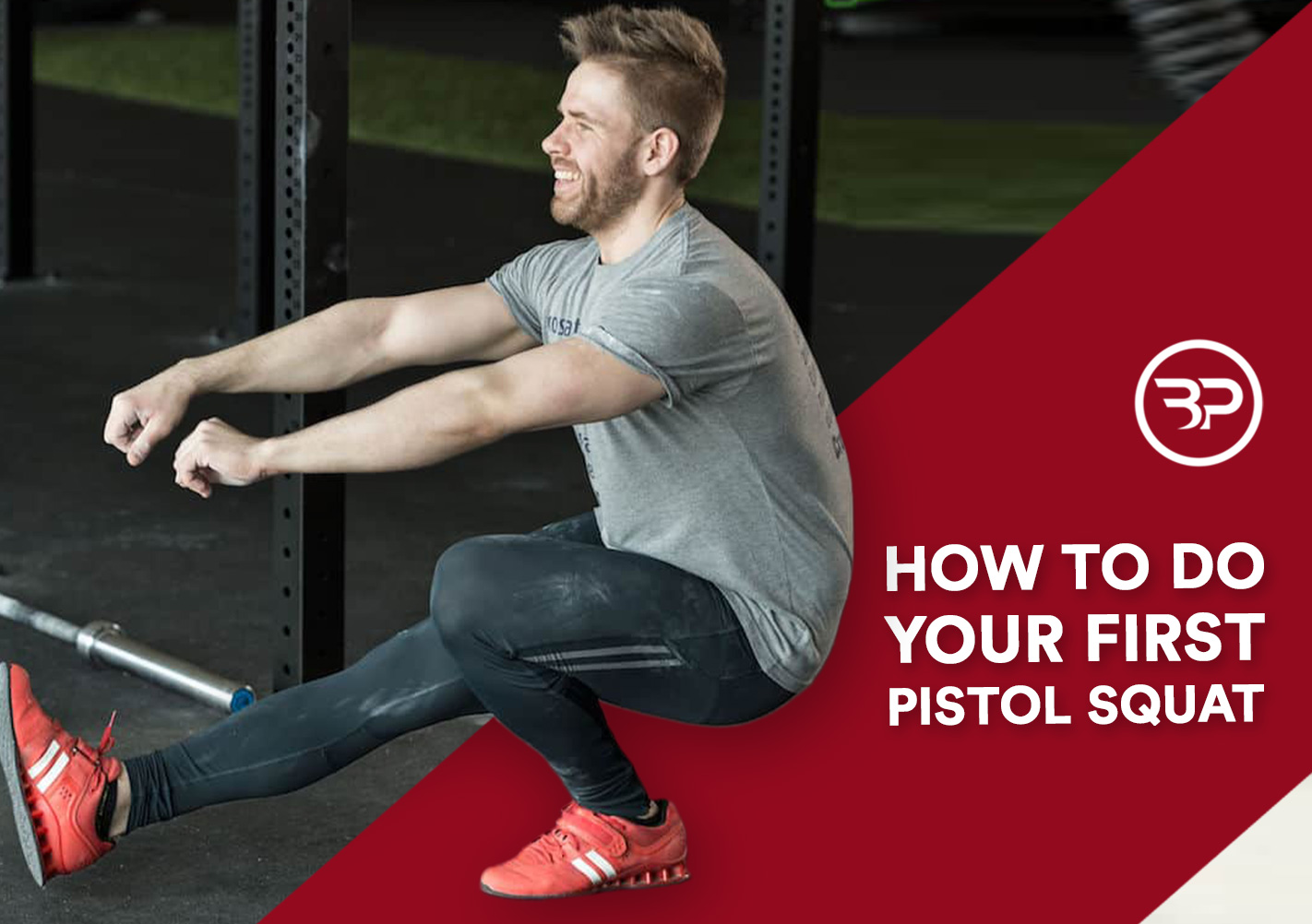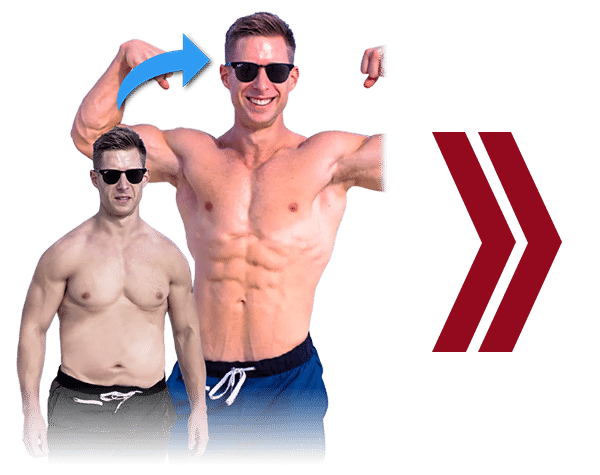How to do your First Pistol Squat
July 5, 2016
The pistol squat is the ultimate blend of single leg strength, stability, and athleticism.
Here’s how to do for first one in as little as six weeks.
This is why you need to do pistol squats — even if the idea seems crazy at first.
When most lifters see pistol squats, they cross their arms across their chest and cringe.
And I don’t blame them.
Freakshow YouTube videos of 140lb dudes squatting on Bosu-balls don’t help. They hide the real story: Pistols are a bad-ass exercise.
Anyone who can stand on one foot and without support, drop into a full squat has a blend of mobility, stability, relative strength, and athleticism that puts them in the top 10% of lifters.
And despite the awesome benefits, pistol squats won’t build massive legs unless you’re doing 20-30 of them at a shot– and maybe 1/1000 people can do that.
And, no, you won’t build a massive deadlift or back squat from crushing pistols. The movement patterns are too different as far the levels of tension created.
But mastering pistol squats improve relative strength display awesome mobility and athleticism. And they’ll make you hot. Even better, they’ll activate dormant muscles and allow you to see which muscles and joints need to improve for pain-free performance.
That means the information you get, whether your knee dives in or you fall forward, is important for reducing injury risk.
I’ll show you how, as well as giving a step by step guide to learning your first pistol in the next six weeks.
Why Pistols are Important:
There are huge demands placed on hip, knee, and ankle mobility while demanding those same joints remain stable during the lift. Since the pistol is purely a unilateral leg exercise (only one place of support, unlike lunges or squats), any gap in movement quality is highlighted, giving you a road-map of your weak points.
By mastering the pistol and training your weak points you’ll be on the road to safer, stronger, and better deadlifting, squatting, cleaning, and sprinting. It all translates into improved overall performance.
It’s all About the Dorsiflexion
The biggest benefit of learning the pistol squat is improving ankle mobility, namely dorsiflexion, the movement when you pull your toe towards your knee.
Better dorsiflexion allows the tibia (shin bone) and thus the knee to track forward over the toe without the heel rising off the ground.
That means safer performance and less knee stress on lifts like lunges, high bar squats, front squats, and Olympic lifts. In sprinting, dorsiflexion helps the foot strike under the hips for more power, shortening the lever of the lower leg to help you run faster than a cheetah. Ok, that’s a stretch, but it’s still important.
For physique, a narrow stance with lunges, squats, and leg presses more effectively targets your quads to build serious leg mass.
And most importantly, a lack of ankle mobility cascades up the kinetic chain, cumulating in poor hip mobility and knee stability that leads to injuries.
For example, a squatter with poor ankle mobility must keep a vertical shin on squats to lift safely and effectively. This is fine for wide stance squatting with externally rotated feet but causes two big issues for more narrow stances.
- The squat turns into a good morning and/or the lifter loses a neutral spine position, predisposing them to back injuries and shitty performance.
- Or the difference in ankle mobility leads to rotation on the bottom of the squat, effectively loading each side of your body with a different weight. Obviously, this is bad for both safety and performance.
By now, you get the point: active range of motion dorsiflexion is important to dominate your training and stay healthy. Few exercises develop dorsiflexion ability like the pistol squat.
Overload the Eccentric Pattern:
While the stress on pistol squats isn’t as high as a heavy negative on a squat, attacking each limb overloads the eccentric to fire up stabilizers and build strength.
Plus, eccentric control gained via pistol squats is vital for tendon strength and helping you hold an optimal position on the bottom of your lifts.
And the final whammy, eccentrics provides mechanical tension to stimulate muscle growth. Now, you won’t get yoked out of your gourd doing pistols, but they attack areas, stabilizers, and joint positions missing from your program to unlock new progress.
2:1 accentuated eccentric pistols to a box are one of the best exercises for this. You’ll groove eccentric control on the negative, meaning you’ll strengthen through the range of motion to train safely, while you learn the movement.
Increase motor unit recruitment:
Improving MU recruitment teaches more muscle units to fire together faster and more frequently, which improves performance and helping you get more athletic.
The pistol squat stabilizers neglected in squats, deadlifts, and lunges, more or less covering the gaps left by bilateral exercises. In essence, underused muscles will now help stabilize and transfer force to make you potentially stronger on your big movements.
Unilateral lifts like the pistol improve muscle unit recruitment and turn on stabilizing muscles that weren’t firing before, preventing compensation patterns that hurt performance and lead to injuries.
Progression:
To learn the pistol squat, I recommend picking the most difficult variation you can safely complete. Train the pistol 2-3 times per week after your main lifts for 2-3 sets of 3-5 reps per leg.
¼ Medicine Ball Paused Pistols:
How to: Standing on one foot, extend the non-working leg as you drop into a ¼ squat while extending the arms holding a medicine ball. This grooves stability and balance through a limited range of motion while the med-ball works as a counterbalance.
Pistol Squat 2:1 Accentuated Eccentrics:
How to: Standing on one foot, extend the non-working leg as you drop into a single leg squat to a box. Take three to four seconds down. Then, stand up using two feet. This one-down two-up technique lets you eccentrically overload the pistol squat, building strength to perform a full pistol, safely.
https://vimeo.com/162766495%20%20
Pistol Squat to Box:
How to: Standing on one foot, extend the non-working leg as you descend into a squat to the box. Touch the box, and return to a standing position. Start with a high box and decrease the height until you’re going 90 degrees, or into a full squat.
Kettlebell Pistol Squat to Box:
How to: Standing on one foot, extend the non-working leg and hold a kettlebell at chest height. Break at the hips, descending to a box. The kettlebell provides overload to boost single-leg strength and control.
Pistol Squat:
How to: Standing on one foot, extend the non-working leg and descend into a full pistol. Squeeze the non-working leg against the squatting leg, pushing your heel into the ground and returning to a full standing position.
If the heel rises off the ground, that’s a sign that you need to improve active ROM through the ankle and decrease the depth of your pistol.
If you’re folding forward at the torso, use a light medicine ball as a counter-balance for your squat.
Goblet Pistol Squat:
How to: These are an advanced method for loading the pistol squat. Only once you’ve mastered a bodyweight pistol should you attempt these. Perform a pistol while holding a kettlebell by the horns.
Considerations:
It’s a common thought that just because an exercise is bodyweight based, it isn’t stressful on the joints. This isn’t the case.
Pistol squats need a high degree of mobility and stability and if done wrong, are stressful on the knee. If you can’t execute the lift, change your depth as your technique and ability allows.
At all times say within your capabilities and use the pistol squat to attack bilateral differences holding back your high-performance training.
Common Technique Issues:
Trunk Flexion
If you’re bending too far forward, use a medicine ball, lightweight, or move the arms in front of your body to act as a counterweight.
Knee Valgus
The knee diving is a motion that if allowed to groove into movements, sets the table for both poor performance and increased knee injury risk. Think of pushing the knee out while keeping the foot flat, and add in lateral band walks for 2 sets of eight reps before training to improve glute medius activation.
Rising Up onto the Toe
If you lack dorsiflexion you’ll shift weight forward onto toes. This gives a smaller base of support, hindering balance and putting excess shear stress on the knee.
In this case, think of sitting back into the squat a bit more and use ankle-wall mobility to increase active range of motion in the ankle. Two sets of eight reps per ankle before pistols makes a huge difference.
The pistol squat is a great exercise for building relative strength, mobility, and stability through the hip, knee, and ankle.
They won’t get you huge, but they’ll give you the feedback to improve your lower body performance, reduce injuries, and build serious single-leg strength.
Now It’s Your Turn
So how about it, are you going to give the pistol progression a shot?










[…] How to do your First Pistol Squat — Eric Bach […]
Nice work Eric and great videos . Congrats on getting 2 articles in the PTDC articles of the week.
Thanks, bro!